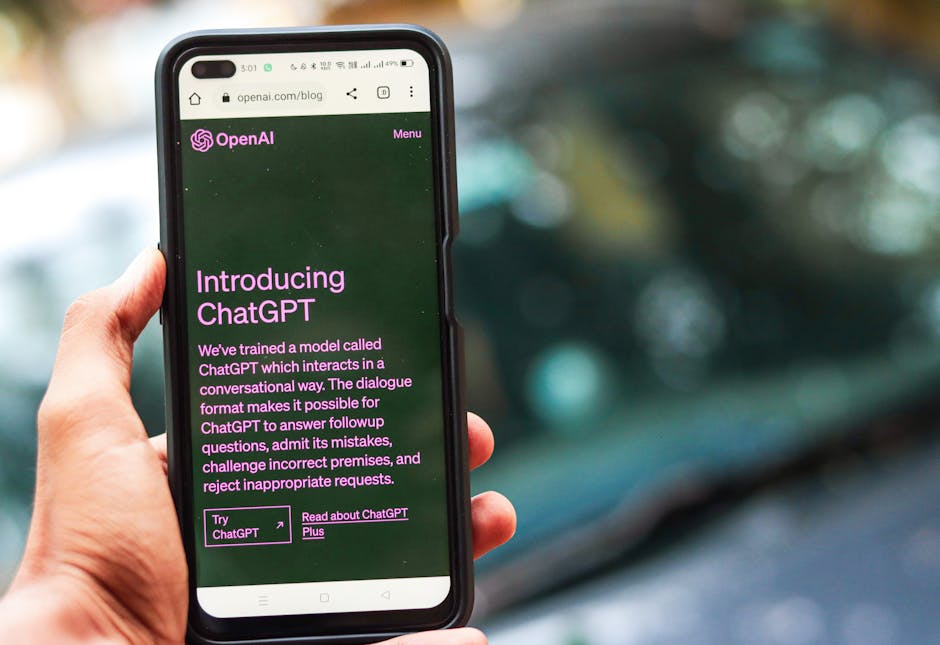Custom Website Creation Services
Table of Content.
- What Are Custom Website Creation Services?
- Benefits of Custom Websites
- Key Features to Consider
- Choosing the Right Provider
- The Development Process Explained
- Cost Factors for Custom Websites
- Future Trends in Custom Web Design
What Are Custom Website Creation Services?
Custom website creation services are all about building websites that match a business's unique needs. Instead of using a one-size-fits-all template, these services tailor a site to fit specific goals and styles. Imagine a clothing store needing an online shop; a custom service would design a site that not only sells products but also reflects the brand's personality.
The process often starts with a discussion between the business and the web developer. They talk about the website's purpose, design preferences, and any special features needed. For instance, a restaurant might want an online reservation system. Then, the developer creates a plan and starts building the site.
Custom services also focus on user experience, making sure the site is easy to navigate and works well on all devices. This includes responsive design, which adjusts the layout for smartphones and tablets. Custom websites can boost a company's online presence, making it stand out in a crowded market.
Benefits of Custom Websites
Creating a custom website offers several advantages. One of the biggest benefits is flexibility. A custom site can be designed to fit your specific needs and goals. This means you get exactly what you want, unlike using a template that might not have all the features you need.
Another advantage is uniqueness. Every custom website is different, which helps your business stand out from the crowd. It reflects your brand's personality and values, making it more memorable to visitors.
Custom websites are also scalable. As your business grows, your site can grow with it. New features can be added without starting from scratch. This saves time and money in the long run.
Additionally, a custom website can improve user experience. It can be designed to be responsive, so it looks good on any device, whether it's a phone, tablet, or computer. A site that's easy to use keeps visitors coming back.
Lastly, having a well-crafted custom website can enhance your search engine ranking. By optimizing content and design, your site becomes more visible to potential customers searching online.
Key Features to Consider
When you create your web site, there are several key features to think about. First, consider the design-web aspect. A clean, attractive layout can make visitors stay longer. Think about color schemes and typography that match your brand.
Next, a responsive-site is crucial. This means your site looks great on both computers and phones. You never know which device people will use to visit.
Custom-web design adds a personal touch. It makes your site unique. Tailor it to fit the needs of your business. This can include custom forms or special features that cater to your audience.
Security is another important feature. Protect your site from hackers and data breaches. Using secure payment gateways and SSL certificates helps keep information safe.
Lastly, think about fast loading times. No one likes to wait for a page to load. Optimize images and reduce unnecessary scripts. This ensures your visitors have a smooth experience.
Choosing the Right Provider
Picking a provider for your custom website can feel like a big decision. There are so many options out there, and each promises to be the best. But how do you know which one is right for you? Let's break it down step by step.
First, consider what you need. Do you want a simple site with a few pages, or something more complex with e-commerce features? Make a list of your must-haves. This way, you can focus on providers who specialize in those areas.
Next, check their portfolio. A good provider should have examples of previous work. Look at their design style. Does it match what you have in mind? If they have made sites similar to what you want, that’s a good sign. It shows they have experience in that area.
Talking to previous clients can also help. Ask the provider for references. Reach out and ask these clients about their experience. Were they happy with the service? Did the provider deliver on time? These insights can be invaluable.
Pricing is another key factor. While it’s tempting to go for the cheapest option, remember that quality often comes with a cost. Get quotes from several providers and compare what’s included. Sometimes paying a bit more upfront means fewer headaches later.
Communication is crucial, too. You want a provider who listens to your needs and responds promptly. During initial discussions, notice how they communicate. Are they clear and easy to understand? Good communication can make the process smoother and more enjoyable.
Lastly, consider ongoing support. Websites need updates and maintenance. A provider offering continued support might be worth considering. This ensures your site stays fresh and functional over time.
By considering these factors, you can find a provider who meets your needs and helps bring your vision to life.
The Development Process Explained
Creating a website from scratch is like building a house. You need a solid plan, the right tools, and skilled hands to bring it to life. Let's break it down step by step, so you can see how it all comes together.
First up, there's the planning stage. This is where you outline what you want your website to do. Think about the goals. Is it for selling products, sharing information, or maybe a mix of both? You also decide on the features you'll need, like a shopping cart or a contact form. Gathering this information early helps avoid problems later.
Next, we have the design phase. Designers create mock-ups or sketches of how the website will look. They choose colors, fonts, and images that match your brand's style. A clear, attractive design makes users want to stay longer on your site. Imagine visiting a website that's a mess of colors and text. You'd probably leave quickly, right? A good design keeps that from happening.
After design comes development. This is where developers write the code that makes your site work. They build the structure and add features like buttons and forms. It's a technical process that requires knowing different programming languages. Developers work closely with designers to make sure the final site matches the initial vision.
Once the development phase is complete, we move to testing. This step is crucial. It checks that everything works as it should. Developers test on different devices and browsers to ensure the site is responsive. They look for bugs or errors and fix them. A small glitch can cause big problems, so thorough testing is key.
Finally, there's the launch. The site goes live for everyone to see. But the job isn't over yet. Websites need regular updates and maintenance to stay secure and up-to-date. This can involve adding new content, fixing issues, or updating software.
Each step in the process is vital. Skipping any can lead to a site that doesn’t meet your needs. With the right approach, you end up with a custom website that’s well-designed, functional, and ready to impress visitors.
Cost Factors for Custom Websites
Creating a custom website involves several cost factors, and it's important to understand them when planning your budget. Let's break down the key elements that contribute to the overall cost.
First, there's the design aspect. A unique design tailored to your brand requires a professional designer. They'll craft a visually appealing and functional site that reflects your company's identity. This process can take time and expertise, making it a significant cost factor.
Next, consider development. Custom websites often require coding from scratch. This involves using programming languages like HTML, CSS, and JavaScript. Developers spend hours writing and testing code to ensure your site runs smoothly. The complexity of features you want, such as e-commerce capabilities or interactive elements, impacts the cost.
Content creation is another element. High-quality content, including text, images, and videos, is crucial for engaging visitors. You might hire a content writer, photographer, or videographer. Their work ensures your website communicates your message effectively.
Hosting and domain registration are ongoing costs. Your website needs a place to live on the internet, which means paying for a hosting service. Additionally, you'll need to register a domain name, which is your website's address.
Maintenance and updates are necessary for keeping your site secure and functional. This includes software updates, backups, and troubleshooting. Some companies offer monthly maintenance packages, which can be an added expense.
Lastly, consider SEO (Search Engine Optimization). To rank well on search engines, your website needs to be optimized. This involves keyword research, meta tags, and link building. Many businesses hire SEO specialists to handle this aspect.
These factors together determine the cost of creating a custom website. By understanding each component, you can make informed decisions and plan your budget effectively.
Future Trends in Custom Web Design
Custom web design is always evolving. The future promises exciting changes. One trend is the rise of voice user interfaces. More people use smart speakers and voice-activated gadgets. Websites will adapt to this by supporting voice commands. This means users can browse and search using their voice. It makes web browsing faster and easier.
Another trend is the use of artificial intelligence (AI). AI can help create personalized experiences. Imagine visiting a website that knows your preferences. It can suggest products or content tailored for you. This makes the user experience better. AI can also help in web design. It can suggest layouts or color schemes based on trends.
Augmented reality (AR) is also gaining popularity. AR lets users interact with digital elements in the real world. Think of trying a new sofa in your living room using your phone. Websites will use AR to enhance shopping experiences. Customers can see products in their own environment before buying.
Responsive design will remain important. More people use mobile devices to access websites. Designs must adapt to different screen sizes. This ensures that users have a good experience whether on a phone or a desktop.
Sustainability is becoming a focus. Websites will use greener technologies. This means less energy use and more efficient coding. It's about being eco-friendly and reducing carbon footprints.
Security is another key area. With more online transactions, secure websites are crucial. Future designs will prioritize user data protection. This builds trust and encourages more people to shop online.
Finally, there is a move towards minimalism. Clean and simple designs are popular. They focus on content and ease of navigation. Users find it easier to get the information they need without distractions.
These trends show that custom web design is moving towards better user experiences. With technology advancing, the web will become more interactive and personalized.
FAQ
What are custom website creation services?
Custom website creation services involve designing and building websites tailored specifically to a client's unique needs and goals. Unlike standard web design solutions, which use pre-made templates, custom services provide a personalized approach, ensuring the website is built from scratch to match the client's brand and functionalities.
What are the benefits of choosing a custom website over a template-based one?
The primary benefits of a custom website include greater flexibility, a unique design that stands out from competitors, improved performance and user experience, and the ability to incorporate specific features and integrations that align with your business goals.
What key features should I look for in custom website creation services?
When selecting custom website creation services, prioritize features like responsive design for mobile compatibility, SEO optimization for better search engine visibility, fast loading times for improved user experience, and security measures to protect user data.
How do I choose the right provider for my custom website project?
To choose the right provider, evaluate their portfolio to assess their design style and technical capabilities, read client testimonials for insights into their reliability and customer service, and ensure they have experience in your industry or with projects similar to yours.
What does the custom website development process involve?
The development process typically includes several stages: initial consultation to understand your needs, planning and wireframing, design mockups, development and coding, content integration, testing for functionality and bugs, and finally, the launch of the site. Post-launch support may also be offered.
What factors influence the cost of custom website creation services?
The cost is influenced by several factors, including the complexity of the design, the number of features and integrations required, the level of customization, the experience and reputation of the service provider, and the timeline for project completion.
What are some future trends in custom web design?
Emerging trends in custom web design include the integration of artificial intelligence for personalized user experiences, the use of advanced data analytics for better decision-making, the incorporation of voice search optimization, and the adoption of progressive web apps for enhanced functionality.



